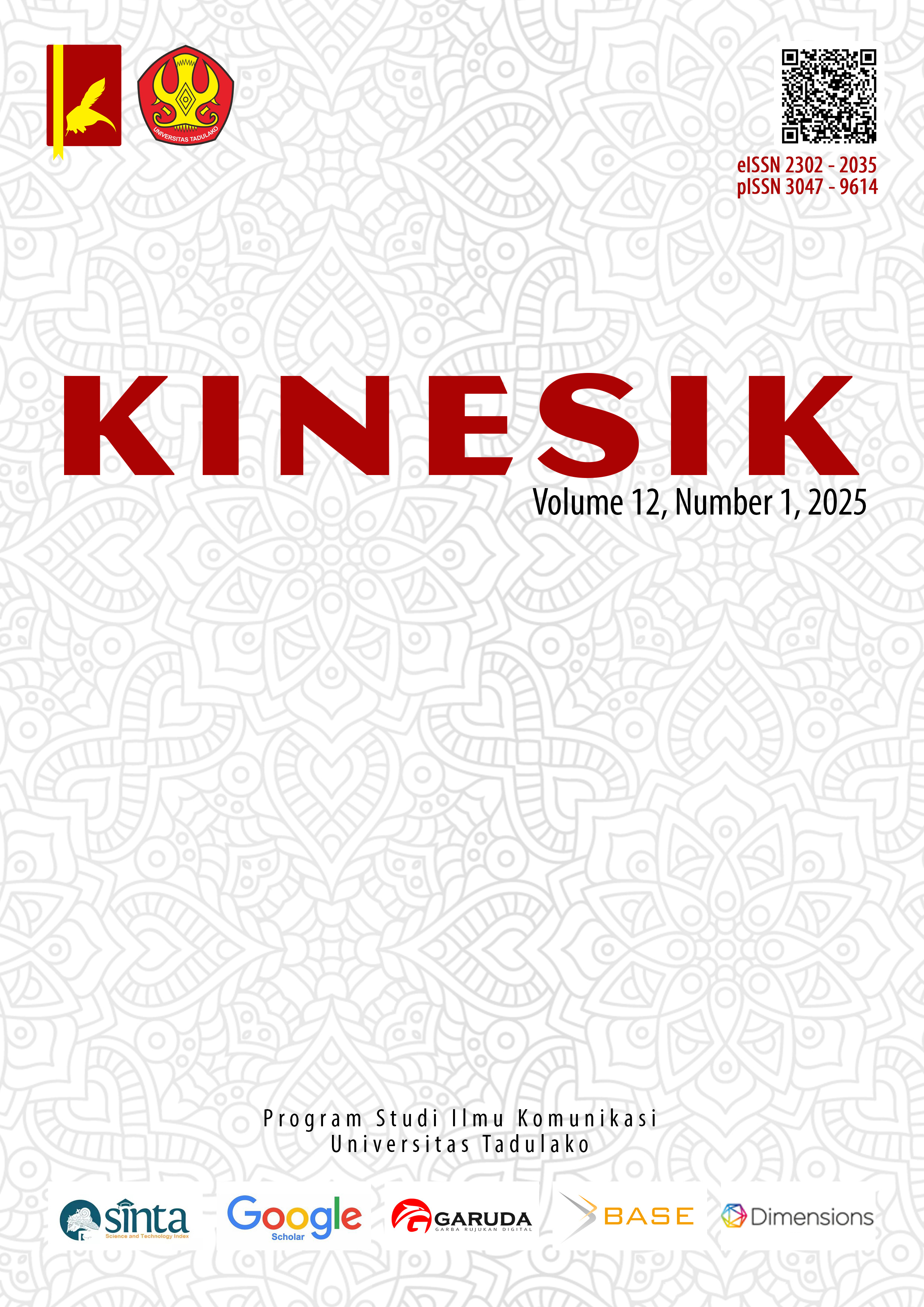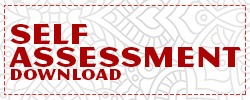Ekonomi Politik Komodifikasi Media Digital: Influencer Anak di YouTube
DOI:
https://doi.org/10.22487/ejk.v12i1.1861Kata Kunci:
Influencer anak, Komodifikasi, Ekonomi politik, Media digital, YouTubeAbstrak
Ekonomi politik media telah berkembang menjadi sebuah praktik yang menjangkau berbagai aspek kehidupan. Platform media digital menjadi saluran bagi kekuatan ekonomi untuk mempengaruhi perilaku konsumen demi memaksimalkan keuntungan. Penelitian ini mengkaji bagaimana anak-anak dikomodifikasi sebagai pekerja dalam industri budaya media digital melalui fenomena Kid Influencer di YouTube. Dengan menggunakan metode kualitatif dan perspektif ekonomi politik, penelitian ini menganalisis kanal YouTube Ryan's World dan Super Duper Ziyan. Pengumpulan data dilakukan dengan menganalisis penelitian terdahulu mengenai Kid Influencer dan mengumpulkan informasi dari kanal-kanal YouTube anak-anak yang populer. Hasil penelitian menunjukkan bahwa kemampuan YouTube untuk menjangkau pemirsa yang ditargetkan memungkinkan anak-anak menjadi objek komodifikasi pekerja, karena monetisasi menciptakan nilai tukar ekonomi. Penelitian ini mengungkapkan bagaimana kapitalisme menyusup ke dalam media, memanfaatkan platform sosial untuk memperluas peluang bisnis melalui konten yang menampilkan anak-anak untuk konsumsi anak-anak.
Unduhan
Referensi
Armando, A. (2016). Televisi Indonesia di bawah kapitalisme global. Penerbit Buku Kompas.
Arviani, H. (2020). Budaya Global dalam Industri Budaya: Tinjauan Madzhab Frankfurt Terhadap Iklan, Pop Culture, dan Industri Hiburan. Global and Policy Journal of International Relations, 1(02). https://doi.org/10.33005/jgp.v1i02.1993
Bourdieu, P. (1986). The Forms of Capital. In Richardson John G. (Ed.), Handbook of Theory and Research for the Sociology of Education (pp. 241–258). Greenwood. https://www.marxists.org/reference/subject/philosophy/works/fr/bourdieu-forms-capital.htm
Bruns, A. (2008). Blogs, Wikipedia, Second life, and Beyond: from production to produsage. In Digital formations. Peter Lang.
Buckingham, D. (2019). The media education manifesto. In The manifesto series. Polity Press.
Castillo-Abdul, B., Romero-Rodríguez, L. M., & Larrea-Ayala, A. (2020). Kid influencers in Spain: understanding the themes they address and preteens’ engagement with their YouTube channels. Heliyon, 6(9), e05056. https://doi.org/10.1016/j.heliyon.2020.e05056
Ceci, L. (2025). YouTube - Statistics & Facts. Statista.com. https://www.statista.com/topics/2019/youtube/#topicOverview
Cohen, N. S. (2008). The Valorization of Surveillance: Towards a Political Economy of Facebook. Democratic Communiqué, 22(1), 5–22. files/1332/Cohen - The Valorization of Surveillance Towards a Politi.pdf
Collins, W. A. (1975). The Developing Child as Viewer. Journal of Communication, 25(4), 35–44. https://doi.org/10.1111/j.1460-2466.1975.tb00636.x
Durham, M. G., & Kellner, D. (2012). Media and cultural studies: keyworks (2nd ed). Wiley-Blackwell.
Feller, G., & Burroughs, B. (2022). Branding Kidfluencers: Regulating Content and Advertising on YouTube. Television & New Media, 23(6), 575–592. https://doi.org/10.1177/15274764211052882
Forbes.com. (2022). Ryan Kaji: Profile. Forbes.Com. https://www.forbes.com/profile/ryan-kaji/?sh=77e929646f3c
Fuchs, C. (2014). Digital labour and Karl Marx. Routledge.
Guzman Neyza, J. D. (2020). The Children of YouTube: How an Entertainment Industry Goes Around Child Labor Laws. Child and Family Law Journal, 8(1), 84–115. https://lawpublications.barry.edu/cflj/vol8/iss1/4
Hardy, J. (2014). Critical political economy of the media: an introduction. In Communication and society. Routledge, Taylor & Francis Group.
Hart, C. (2018). Doing a literature review: releasing the research imagination. In Sage study skills (2nd edition). Sage.
Hesmondhalgh, D., & Baker, S. (2011). Creative labour: media work in three cultural industries. In Culture, economy and the social. Routledge.
Hidalgo-Marí, T., & Segarra-Saavedra, J. (2017). The Youtuber Phenomenon and its Transmedia Expansion. Analysis of Youth Empowerment in Social Media. Fonseca, Journal of Communication, 15(15), 43. https://doi.org/10.14201/fjc2017154356
Horkheimer, M., & Adorno, T. W. (2020). The Culture Industry: Enlightenment as Mass Deception. In G. S. Noeri (Ed.), Dialectic of Enlightenment (pp. 94–136). Stanford University Press. https://www.degruyter.com/document/doi/10.1515/9780804788090-007/html
Law Number 40 of 1999 concerning the Press, (1999).
Law Number 13 of 2003 concerning Manpower, (2003).
Jurriëns, E., Tapsell, R., & Muse, P. (2017). Digital Indonesia: Connectivity and Divergence. In Indonesia update series. ISEAS-Yusof Ishak Institute.
Krippendorff, K. (2019). Content analysis: an introduction to its methodology (Fourth edition). SAGE. files/1356/Krippendorff - 2019 - Content analysis an introduction to its methodolo.pdf
Laksono, P. (2019). KUASA MEDIA DALAM KOMUNIKASI MASSA. Al-Tsiqoh : Jurnal Ekonomi Dan Dakwah Islam, 4(2), 49–61. https://doi.org/https://doi.org/10.31538/altsiq.v4i2.610
Livingstone, S., Stoilova, M., & Nandagiri, R. (2019). Children’s data and privacy online: Growing up in a digital age. London School of Economics and Political Science, 1–57. files/1380/Domazet and Šušak-Lozanovska - 2023 - Children’s data and privacy online Growing up in .pdf
Livingstone, S., & Third, A. (2017). Children and young people’s rights in the digital age: An emerging agenda. New Media & Society, 19(5), 657–670. https://doi.org/10.1177/1461444816686318
Mansell, R., & Steinmueller, W. E. (2020). Advanced introduction to platform economics. In Elgar advanced introductions. Edward Elgar Publishing. files/1373/Mansell and Steinmueller - 2020 - Advanced introduction to platform economics.pdf
Mardatillah, A., Raharja, S. J., Hermanto, B., & Herawaty, T. (2019). Riau Malay food culture in Pekanbaru, Riau Indonesia: commodification, authenticity, and sustainability in a global business era. Journal of Ethnic Foods, 6(1), 3. https://doi.org/10.1186/s42779-019-0005-7
McQuail, D. (2010). McQuail’s Mass Communication Theory. Sage Publications.
Mosco, V. (2009). The Political Economy of Communication. SAGE Publications Ltd. https://sk.sagepub.com/books/the-political-economy-of-communication
O’Connor, C. (2017, December 20). Forbes Top Influencers: Meet The Kids Making Millions Reviewing Toys, Rapping And More. Forbes.Com. https://www.forbes.com/sites/clareoconnor/2017/12/20/forbes-top-influencers-meet-the-kids-making-millions-reviewing-toys-rapping-and-more/?sh=6187b2b04142
Riggio, A. G. (2021). The Small-er Screen: YouTube Vlogging and the Unequipped Child Entertainment Labor Laws. Seattle University Law Review, 44(2), 493–530. files/1374/Riggio - The Small-er Screen YouTube Vlogging and the Uneq.pdf
Sihombing, L. H. (2023). The Values of Character Education in an Animated Movie,”Pororo, The Little Penguin”. KOMUNIKA: Jurnal Dakwah Dan Komunikasi, 17(1), 103–113. https://doi.org/10.24090/komunika.v17i1.7983
Smythe, D. W. (1977). Communications: Blindspot of Western Marxism. Journal of Political and Social Theory, 1(3), 1–27.
Socialblade.com. (2023). Superduper Ziyan’s YouTube Stats (Summary Profile). Socialblade.Com. https://socialblade.com/youtube/channel/UCX4RlEWrnNvS39AsHIKm8TA
Tranfield, D., Denyer, D., & Smart, P. (2003). Towards a Methodology for Developing Evidence‐Informed Management Knowledge by Means of Systematic Review. British Journal of Management, 14(3), 207–222. https://doi.org/10.1111/1467-8551.00375
Tur-Viñes, V., Núñez-Gómez, P., & González-Río, M. J. (2018). Kid influencers on YouTube. A space for responsibility. Revista Latina de Comunicación Social, 73, 1211–1230. https://doi.org/10.4185/RLCS-2018-1303
Yosef, I. (2022). Komodifikasi Anak dalam Variety Show Korea Selatan The Return of Superman (TROS). Jurnal ILMU KOMUNIKASI, 19(2), 145–162. https://doi.org/10.24002/jik.v19i2.3998







